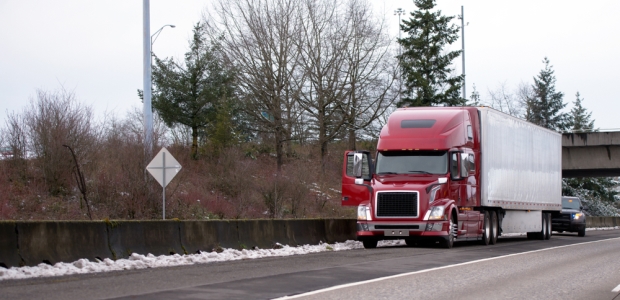
About 5,000 Vehicles Pulled from Service During Brake Safety Week
Enforcement personnel throughout Canada and the United States inspected commercial motor vehicles for brake violations. During the week, they placed 4,955 vehicles out of service until critical problems with their brakes could be fixed.
This year's Brake Safety Week, which took place Sept. 16-22 and involved enforcement personnel in 57 jurisdictions throughout Canada and the United States inspecting commercial motor vehicles for brake violations, resulted in 4,955 vehicles being placed out of service until critical problems with their brakes could be fixed, the Commercial Vehicle Safety Alliance reported Nov. 6. CVSA said 35,080 inspections of commercial motor vehicles were carried out during the week.
Brake Safety Week is part of CVSA's Operation Airbrake Program in partnership with the Federal Motor Carrier Safety Administration and the Canadian Council of Motor Transport Administrators.
Brake violations were the leading vehicle out-of-service violation during the CVSA's International Roadcheck 72-hour enforcement initiative in June 2018, and according to FMCSA data (as of Sept. 28, 2018), out of 2.38 million inspections, there were 1,045,335 brake-related violations in federal fiscal year 2018, with a portion of those accounting for seven of the top 20 vehicle violations. Seeking to address brake system violations, jurisdictions throughout North America participated in this year's Brake Safety Week, with the goal of reducing the number of crashes involving brake-related problems by raising awareness throughout the motor carrier community of the importance of properly functioning brake systems and by conducting roadside inspections to identify and remove vehicles with critical brake violations from the roads.
Brake Safety Week data also captured antilock braking system violations, indicating how well the systems are maintained in accordance with federal regulations. ABS helps a vehicle stop in the shortest possible distance under many conditions and maintain steering control in situations when tires may slip. Many participating jurisdictions surveyed ABS compliance; ABS violations were counted when the malfunction lamp did not illuminate or stayed on. Their findings:
26,143 air-braked power units required ABS, and 8.3 percent (2,176) had ABS violations.
17,857 trailers required ABS; 12.5 percent (2,224) had ABS violations.
5,354 hydraulic-braked trucks required ABS; 4.4 percent (234) had ABS violations.
651 motorcoaches/buses required ABS; 2 percent (13) had ABS violations.
"Whether you're driving a commercial motor vehicle or inspecting one, we all know the importance of properly functioning brakes," said CVSA President Lt. Scott Carnegie with the Mississippi Highway Patrol. "It is essential that we – law enforcement, drivers, and motor carriers – do all that we can through prevention, education, outreach, and action to ensure only the safest commercial motor vehicles are being operated by professional drivers on our roadways."